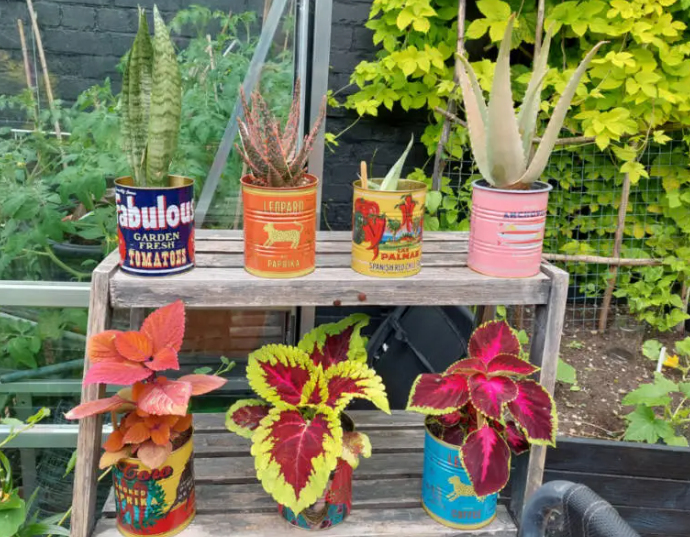Composting is one of the best ways to reduce waste and enrich your garden soil naturally. However, buying a compost bin can be expensive. Fortunately, you can easily make your own compost bin using materials you likely have around, such as wooden pallets. Pallet compost bins are not only eco-friendly but also cost-effective and customizable to fit your space. Whether you have a small backyard or a larger garden, building a compost bin from pallets is a simple and rewarding DIY project.
Why Use Wooden Pallets for a Compost Bin?
Wooden pallets are a fantastic material for compost bins for several reasons:
Cost-Effective: Pallets are often free or inexpensive, especially if you can find used ones from local businesses or online marketplaces.
Ventilation: The slats in wooden pallets provide excellent airflow, which is crucial for the composting process. Aeration helps to speed up decomposition and reduce odors.
Durability: Pallets are sturdy and built to last, making them a long-term solution for composting.
Customizable: You can adjust the size of your bin to suit your needs and space. Whether you’re composting for a small garden or large-scale composting, pallets allow you to easily expand or modify the structure.
Materials You’ll Need:
4 wooden pallets (standard size, about 40” x 48”)
Screws or nails (for assembling the pallets)
Hinges (optional, for making a door)
Drill and screwdriver
Measuring tape
Optional: Landscape fabric or mesh (for the bottom to keep pests out)
Step-by-Step Guide:
Select a Location Choose a location for your compost bin that is well-drained and receives some sunlight to help speed up decomposition. It should also be easily accessible for adding scraps and turning the compost.
Prepare the Pallets Find four sturdy wooden pallets. You can often find them for free at local warehouses, home improvement stores, or through online platforms like Craigslist or Facebook Marketplace. Make sure the pallets are in good condition, without excessive damage or rot. If needed, clean them up by removing nails or debris.
Assemble the Frame Position three pallets vertically to create the three sides of the bin. The fourth pallet will be used as the front or door. If you want a simple open-front bin, leave the front pallet unattached or hinge it so it can swing open. If you prefer a fully enclosed bin, you can attach the fourth pallet to the front using screws or nails.
To attach the pallets, align them in a square or rectangular shape and fasten them together at the corners with screws or nails. You may want to overlap the edges slightly for extra stability.
Secure the Bottom (Optional) To prevent pests from entering and to keep the compost contained, you can secure a piece of landscape fabric or mesh to the bottom of the bin. This will also help with drainage while allowing air to circulate. If you’re composting on the ground and don’t mind some pests, you can skip this step.
Fill with Organic Matter Start adding organic waste to your compost bin. You can add fruit and vegetable scraps, grass clippings, leaves, small branches, and coffee grounds. Try to maintain a balance of “green” (nitrogen-rich) and “brown” (carbon-rich) materials for effective decomposition. Avoid adding meat, dairy, or oily foods, as these can attract pests.
Maintain Your Compost To keep the composting process active, turn the pile regularly to introduce air, which accelerates decomposition. Use a pitchfork or shovel to mix the materials, ensuring moisture is evenly distributed. You can also add water if the pile seems too dry. As time goes on, the material will break down into dark, crumbly compost, which can be used to enrich your garden soil.

Tips for Success:
Size: If you need a larger composting area, simply add more pallets to expand the bin.
Aeration: Make sure there’s plenty of air circulation by keeping the sides loose or adding ventilation holes. A good compost pile should feel warm to the touch.
Size of Pieces: To speed up decomposition, chop or shred larger scraps before adding them to the bin.
Compost “Cooks” Faster: Keep your compost pile moist but not too wet. It should be the consistency of a wrung-out sponge.
Benefits of a Pallet Compost Bin:
Environmentally Friendly: Upcycling pallets reduces waste and helps keep them out of landfills, while composting organic material reduces waste that would otherwise go to a landfill.
Affordable: Using free or low-cost pallets is much cheaper than purchasing a pre-made compost bin.
Sustainable Gardening: The compost you produce from this DIY bin will naturally fertilize your garden, reduce the need for chemical fertilizers, and help retain moisture in the soil.






